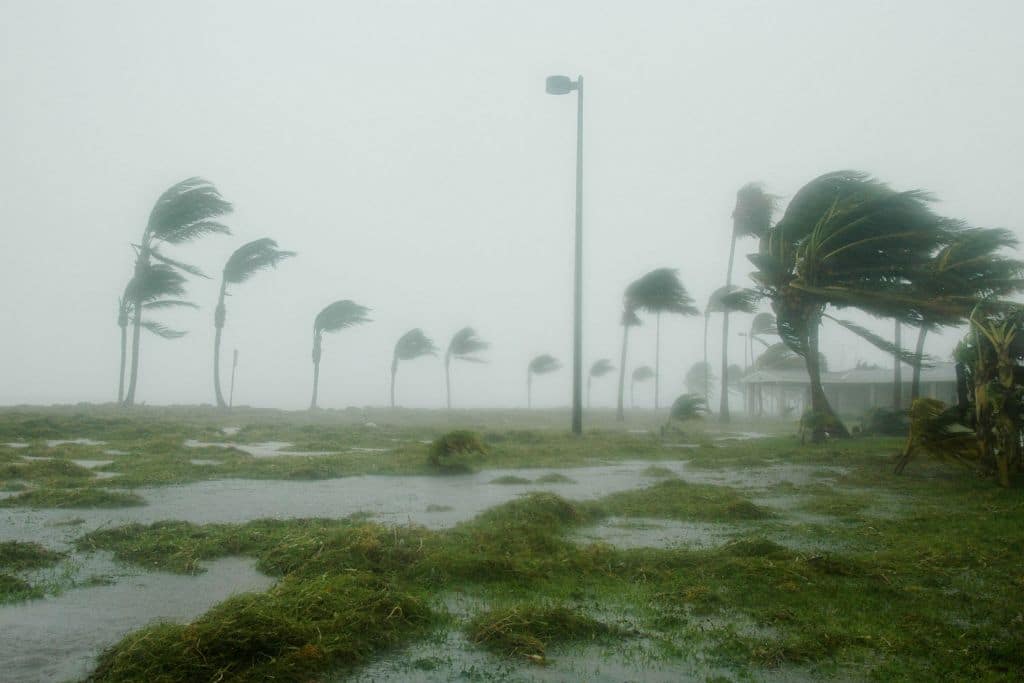Hurricane Otis slammed into the Mexican town of Acapulco at Category 5 intensity early Wednesday, with winds up to 165 mph.
—
Hurricane Otis’ explosive intensification from a tropical storm to a Category 5 in just 24 hours is a symptom of anthropogenic climate change, scientists say, and one that is becoming more frequent as the crisis intensifies.
Otis made landfall near Acapulco, a beach resort town of almost 900,000 on Mexico’s Pacific coast, in the early hours of Wednesday, packing destructive winds up to 165 mph (266 kph). The country’s first Category 5 storm left devastation in its wake and approximately US$15 billion in damage, according to early government estimates.
Winds increased by 80 mph (129 kph) in just 24 hours, shifting from a tropical storm to a Category 5 hurricane much faster than forecasters expected.
Massive flooding submerged roads and bridges and cut all communications in the region, including with emergency teams. Videos on social media showed the extent of the devastation, with dozens of buildings and shops left without roofs and windows. At least 27 people died, though the real number is still unknown as dozens of people remain missing.
Mexican President Andrés Manuel López Obrador, who arrived in Acapulco in a large SUV as airports remained closed on Wednesday, said the hurricane “didn’t leave a single light post standing,” though state-owned utility CFE said that about 40% of the town’s electricity had been restored by Wednesday night, Bloomberg reported.
Eric Blake, a scientist at the US National Hurricane Center (NHC), said that the rapid intensification, fueled in part by extremely warm ocean waters made more common by climate change, combined with the lack of warning, created a “nightmare scenario.”
“This is an extremely serious situation for the Acapulco metropolitan area,” Blake wrote in an advisory. “There are no hurricanes on record even close to this intensity for this part of Mexico.”
Blake later took to social media to explain the sober statement. “Thought long and hard about the word nightmare,” he wrote on X, formerly known as Twitter. “But a rapidly interesting, category 5 headed towards a major city that was just a TS less than 24 hours ago. That’s a nightmare scenario as Max Mayfield used to preach.”
Meteorologist Bob Henson wrote on X that Hurricane Otis did not hit the Mexican city without notice, saying forecasters had predicted its arrival and issued hurricane warnings on Monday afternoon, though they were “flabbergasted” by the hurricane’s unpredicted leap to Category 5 strength.
There is no doubt among the scientific community that warming oceans are fuelling stronger tropical cyclones – the costliest and deadliest weather disasters in the US. Worldwide, surface ocean temperatures have been exceptionally high this year.
About 80% of major hurricanes (category 3-5) undergo rapid intensification, making it challenging to forecast their trajectory and thus issue timely evacuation orders and alerts across communities, risking a higher number of fatalities.
A study published last week in Nature suggested that the fastest-strengthening Atlantic tropical storms between 2001 and 2020 – including billion-dollar hurricanes Sandy (2012), Harvey (2017), Ida (2021), and Ian (2022) – intensified on average almost 29% more quickly and the number of storms going from Category 1 or weaker to Category 3 or stronger in 36 hours has doubled in the same period.
The world has already warmed 1.1C above the preindustrial levels. At 2C of warming, scientists at the US National Oceanic and Atmospheric Administration (NOAA) expect that hurricane wind speeds could increase by up to 10%. Simply put, hurricanes could be stronger, wetter, and likelier to cause floods, especially when combined with sea level rise.
You might also like: Biden Says Climate Change Is Undeniable After Cat. 3 Hurricane Idalia Lashes Florida


















